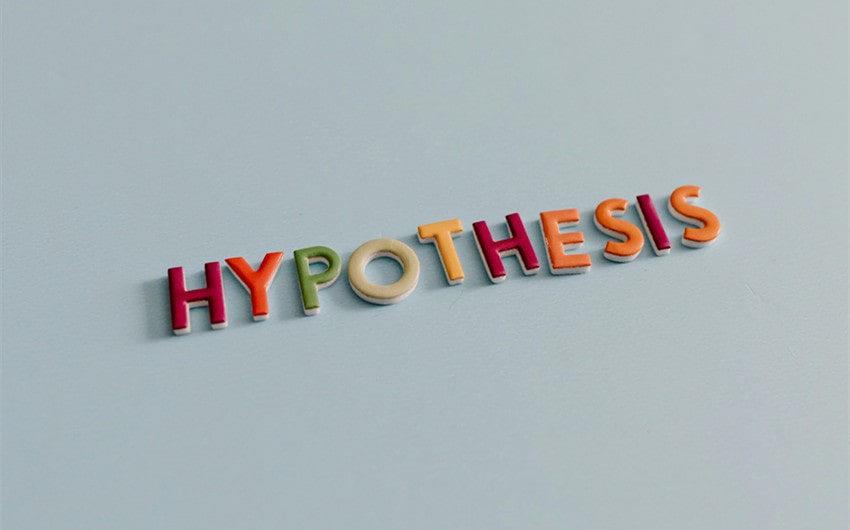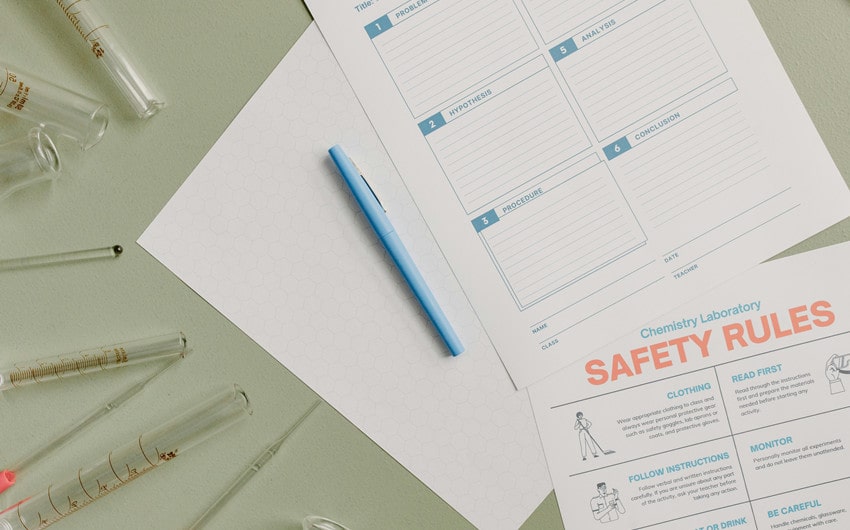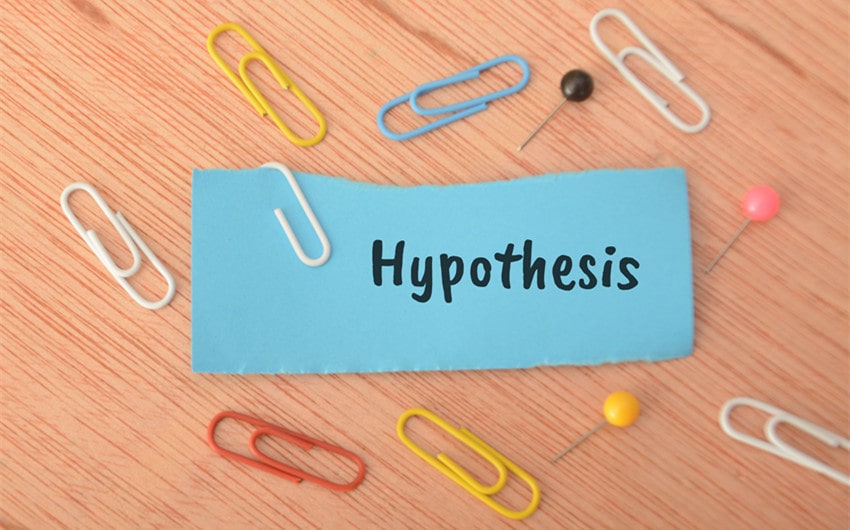Hypothesis Examples for Beginners: Master the Basics Easily
We make guesses and assumptions all the time, whether it’s predicting the weather or figuring out why a plant isn’t growing. In science, these guesses are called hypotheses, and they help guide experiments and research. A hypothesis is simply a testable idea about how something works. If you’ve ever wondered how to create a strong one, or what makes a good guess stand out, we’ve got you covered. In this article, we’ll walk through clear hypothesis examples to help you better understand how they work and why they matter.
Types of Hypotheses
There are various types of hypotheses that serve different purposes in research and experimentation. Each type plays a unique role in shaping how a study is conducted and how its results are interpreted. Understanding these different types can help you formulate the right hypothesis based on the nature of your research. Below are the main types of hypotheses:
1. Simple Hypothesis
A simple hypothesis predicts a relationship between two variables: one independent variable and one dependent variable. This type is straightforward, making it easy to test and analyze. Simple hypotheses are often used in controlled experiments where the researcher wants to focus on one key relationship between cause and effect.
This type is ideal when researchers are investigating how one factor (cause) directly influences an outcome (effect). By isolating a single variable, the results tend to be more precise, making it easier to draw conclusions.
2. Complex Hypothesis
A complex hypothesis involves multiple variables, either multiple independent variables, multiple dependent variables, or both. This type of hypothesis explores more complicated relationships and interactions between variables. It is useful in more advanced research where the outcome is influenced by more than one factor.
Complex hypotheses allow researchers to examine interactions between multiple factors, providing a more detailed understanding of the phenomena being studied. However, this complexity can make the hypothesis harder to test and may require more elaborate experimental setups.
3. Null Hypothesis (H₀)
The null hypothesis states that there is no relationship between the variables being studied. It asserts that any observed effects in an experiment are due to random chance or error rather than a direct relationship between the independent and dependent variables.
The null hypothesis is essential in scientific research because it provides a baseline for comparison. Researchers aim to disprove or reject the null hypothesis by showing evidence of a significant effect or relationship. If the null hypothesis cannot be rejected, the assumption is that no meaningful relationship exists between the variables.
4. Alternative Hypothesis (H₁ or Hₐ)
The alternative hypothesis contradicts the null hypothesis by stating that there is a relationship between the variables being studied. It suggests that the independent variable has an effect on the dependent variable and that this effect is not due to random chance.
The alternative hypothesis is what researchers aim to support through their experiments. If the evidence shows that the null hypothesis can be rejected, then the alternative hypothesis is considered valid. This hypothesis is often framed as an “if, then” statement to clarify the cause-and-effect relationship.
5. Directional Hypothesis
A directional hypothesis specifies the expected direction of the relationship between variables. It predicts whether the relationship between the independent and dependent variables will be positive or negative. For example, it may predict that an increase in one variable will lead to an increase (or decrease) in another variable.
Directional hypotheses are useful when previous research or theory suggests a specific outcome. By indicating the expected direction of the effect, the hypothesis provides a clearer focus for testing. However, if the direction is not supported by the evidence, the hypothesis may need to be revised or rejected.
6. Non-Directional Hypothesis
A non-directional hypothesis predicts that a relationship exists between variables but does not specify the direction of the effect. It only states that there will be some kind of relationship or difference, leaving the direction of the effect open to investigation.
This type of hypothesis is often used in exploratory research, where the researcher does not have enough information to predict the specific direction of the relationship. The goal is simply to determine whether an association exists, without assuming beforehand whether the variables will increase, decrease, or change in some other way.
7. Associative Hypothesis
An associative hypothesis suggests a relationship or correlation between variables but does not imply a direct cause-and-effect relationship. Instead, it indicates that when one variable changes, the other variable changes in a consistent pattern. However, it doesn’t claim that one variable causes the other to change.
Associative hypotheses are common in observational studies where direct causality cannot be established. They are useful for identifying trends or patterns, but they require further research to determine whether the relationship is truly causal.
8. Causal Hypothesis
A causal hypothesis proposes a cause-and-effect relationship between two or more variables. It suggests that changes in the independent variable will directly cause changes in the dependent variable. This type of hypothesis is most often used in experiments where the researcher manipulates one variable to observe its direct impact on another.
Causal hypotheses are fundamental in controlled experiments. By testing the hypothesis in a controlled setting, researchers can eliminate confounding factors and focus on the direct relationship between the variables. Proving a causal hypothesis can lead to strong conclusions about how certain factors influence outcomes.
9. Empirical Hypothesis
An empirical hypothesis is based on observations and can be tested through experimentation. It emerges from real-world data or experiences, often formulated after observing a particular pattern or trend. This hypothesis is tested by collecting data to see if the observed pattern holds true under controlled conditions.
Empirical hypotheses are rooted in reality and are developed through practical observations, making them highly relevant to applied research. They bridge the gap between theory and practice by taking insights from the real world and testing them in scientific settings.
10. Logical Hypothesis
A logical hypothesis is based on reasoning or deduction rather than direct observation. It is formulated by using logical connections and assumptions to predict outcomes. Although not immediately testable, logical hypotheses can lay the groundwork for further investigation and experimentation.
Logical hypotheses are often used in theoretical or conceptual research, where the goal is to explore ideas or concepts that are difficult to observe directly. While these hypotheses may not be immediately testable, they provide valuable starting points for developing theories or future empirical research.
Examples of Hypotheses

Hypotheses come in many forms and are tailored to fit the research being conducted. Below are various examples of hypotheses, each corresponding to the types described earlier. These examples are explained in more detail to give a clearer understanding of how hypotheses are used in scientific research.
1. Simple Hypothesis Examples
- If students eat breakfast, they will perform better on exams.
- If plants are exposed to sunlight, they will grow taller.
- If employees work longer hours, they will experience higher levels of stress.
2. Complex Hypothesis Examples
- If students eat a nutritious breakfast and get enough sleep, their exam scores and alertness will improve.
- If plants receive sunlight and nutrient-rich soil, they will grow taller and produce more flowers.
- If employees are given flexible hours and reduced workloads, their productivity and job satisfaction will increase.
3. Null Hypothesis Examples (H₀)
- There is no difference in exam performance between students who eat breakfast and those who don’t.
- Sunlight has no effect on the growth of plants.
- There is no difference in stress levels between employees with flexible hours and those with fixed schedules.
4. Alternative Hypothesis Examples (H₁ or Hₐ)
- Students who eat breakfast perform better on exams than those who skip it.
- Plants exposed to sunlight grow taller than those kept in the dark.
- Employees with flexible hours have higher job satisfaction than those with fixed schedules.
5. Directional Hypothesis Examples
- If students get more sleep, they will perform better on tests.
- If people exercise regularly, their stress levels will decrease.
- If employees receive more training, their productivity will increase.
6. Non-Directional Hypothesis Examples
- There is a relationship between sleep duration and test performance.
- There is an association between exercise and stress levels.
- There is a link between employee training and productivity.
7. Associative Hypothesis Examples
- There is a correlation between the level of education and income.
- There is an association between hours of study and academic performance.
- There is a relationship between job satisfaction and employee retention.
8. Causal Hypothesis Examples
- Smoking causes an increased risk of lung cancer.
- Increased study time results in better academic performance.
- Excessive screen time leads to poorer sleep quality.
9. Empirical Hypothesis Examples
- Watering plants daily will lead to faster growth than watering them weekly.
- Adding fertilizer to crops will increase yield.
- Regular physical activity reduces the risk of heart disease.
10. Logical Hypothesis Examples
- If there are planets outside our solar system, some may support life.
- If animals are treated humanely, their productivity on farms will increase.
- If people are exposed to prolonged stress, their immune system will weaken.
Key Components of a Hypothesis
A well-constructed hypothesis includes several essential components. Understanding these elements is critical to formulating a clear and testable hypothesis that can guide research or an experiment.
1. Independent Variable
This is the variable you deliberately change or manipulate during an experiment. It is considered the cause or factor that may bring about change in another variable. Choosing the correct independent variable is crucial, as it directly impacts the results of the experiment.
2. Dependent Variable
The dependent variable is what you measure or observe in response to changes in the independent variable. It represents the effect in the cause-and-effect relationship and is the primary outcome you are investigating. Accurate measurement of the dependent variable ensures that the results are reliable and valid.
3. Control Variables
Control variables, or constants, are the factors that remain unchanged throughout the experiment. Keeping these variables consistent ensures that the relationship between the independent and dependent variables is not influenced by outside factors. Without proper control variables, the experiment’s validity can be compromised, as results could be skewed by unintended influences.
4. Testability
A hypothesis must be testable, meaning it can be examined through experimentation, observation, or data collection. Testability allows researchers to gather evidence to support or refute the hypothesis. If a hypothesis cannot be practically tested, it cannot contribute to scientific knowledge.
5. Falsifiability
Falsifiability is a critical element of a hypothesis. It means that there should be a possible outcome that could prove the hypothesis wrong. If a hypothesis cannot be disproven, it lacks scientific validity. Falsifiability ensures that the hypothesis can be objectively tested, allowing for genuine verification or rejection based on evidence.
6. Clarity and Specificity
A good hypothesis must be clear and specific. Ambiguous or vague hypotheses are difficult to test because they don’t outline precise expectations or measurable outcomes. Clarity ensures that the relationship between the variables is easy to understand, while specificity ensures that the hypothesis focuses on a particular, well-defined aspect of the research.
7. Relevance
The hypothesis should be relevant to the research question or problem. It should aim to address a gap in knowledge or contribute to understanding a particular issue. Ensuring that the hypothesis is aligned with the research objective helps focus the experiment and makes the findings more meaningful.
How to Formulate a Hypothesis

Formulating a strong hypothesis is a key step in conducting meaningful research. A well-thought-out hypothesis serves as the foundation for testing theories and answering research questions. Below is a step-by-step guide on how to develop a solid hypothesis:
1. Start with a Clear Research Question
Every good hypothesis begins with a clear research question or problem. Identify a specific issue you want to investigate and ensure it’s something that can be tested. The research question should focus on a measurable relationship or an observable phenomenon. This clarity helps in forming a precise hypothesis and keeps the research on track.
2. Conduct Background Research
Before formulating your hypothesis, it’s essential to gather information on the subject. Conduct background research by reviewing existing studies, articles, or experiments related to your topic. Understanding what has already been explored helps refine your hypothesis and ensures that your investigation builds on existing knowledge.
3. Identify and Define Your Variables
Identify the independent variable (the factor you will change) and the dependent variable (the outcome you will measure). Clearly defining these variables allows for a focused hypothesis and gives structure to the research. Proper identification of variables is crucial because it lays the foundation for testing and helps clarify the relationship being explored.
4. Make the Hypothesis Testable
Ensure that your hypothesis is something that can be tested through experiments, observations, or data collection. The variables involved should be measurable, and there should be a clear way to collect evidence that supports or refutes the hypothesis. Avoid making assumptions or vague statements that cannot be evaluated scientifically.
5. Use an “If, Then” Structure
One of the simplest and most effective ways to frame a hypothesis is by using an “If, then” structure. This format directly connects the independent variable (the cause) with the dependent variable (the effect), making the relationship easy to understand. Using this structure helps clarify what you are testing and sets up a clear expectation for the outcome.
6. Ensure Simplicity and Precision
Simplicity is key when formulating a hypothesis. Avoid overly complex statements that can confuse the purpose of the research. Your hypothesis should be concise, clearly stating what you are testing and what results you expect. A precise hypothesis is easier to test and reduces the risk of ambiguous findings. Keep it straightforward and to the point, so the research remains focused.
7. Consider Falsifiability
Make sure that your hypothesis is falsifiable, meaning that there is a potential outcome that could prove it wrong. Falsifiability is a hallmark of a good hypothesis because it opens the door for objective testing. A hypothesis that cannot be falsified lacks scientific rigor and does not contribute to meaningful experimentation.
8. Review and Refine
After drafting your hypothesis, take time to review and refine it. Ensure that it is aligned with your research goals and is specific, testable, and clear. A well-refined hypothesis will guide your research and lead to more accurate and meaningful results. Don’t hesitate to revise your hypothesis if new information or insights emerge during the research process.
9. Ensure Alignment with the Research Objective
A hypothesis should directly address the research objective. It should aim to solve or explore a specific problem or question that is central to the study. Aligning the hypothesis with the research objective ensures that your research remains focused and that the hypothesis contributes meaningfully to the broader study.







